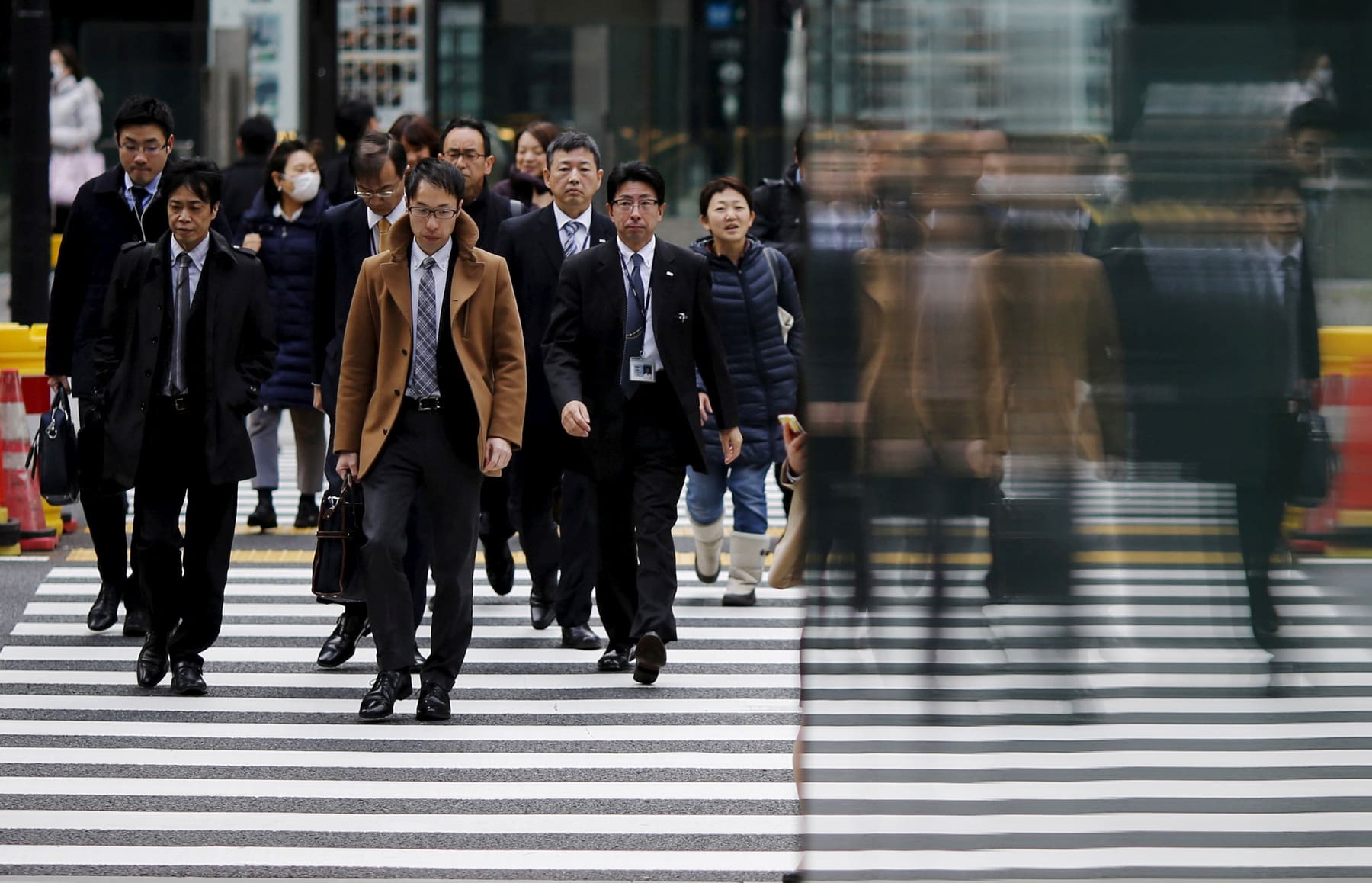What is Keiretsu?

What is Keiretsu?[/caption] Keiretsu is a business structure that involves a group of companies. These companies are vertically and horizontally integrated through shareholding relationships, and they are centered around a core bank. Companies in the Keiretsu maintain close business relationships with each other. They often share resources and information to work together more effectively. This structure allows them to collaborate closely and to function as a single entity. Keiretsu members often invest in each other's businesses. They also often sit on each other's boards, helping to coordinate decisions and ensure alignment across the group. Through this collaborative approach, Keiretsu companies are able to achieve economies of scale and compete more effectively in the marketplace.
Japanese Keiretsu system History
Keiretsu's origins can be traced back to the pre-World War II era when large conglomerates known as zaibatsu dominated Japan's economy. Keiretsu evolved from these conglomerates and have since become a unique aspect of Japanese business culture, contributing to the country's economic success. After the war, the Allied powers disbanded the zaibatsu and forced the Japanese government to adopt a new, more decentralized economic model. Keiretsu emerged as a response to this new environment, as companies sought to maintain the close relationships and business ties that had characterized the zaibatsu system.
Understanding the Keiretsu System: Interconnected Business Relationships in Japan's Economy
 Keiretsu: Interconnected Business Relationships in Japan's Economy [/caption] A keiretsu has been a dominant force in the Japanese economy since the latter half of the 20th century. Legally, it is an informal business group comprised of loosely organized alliances within Japan's business community. The keiretsu emerged in the aftermath of the Second World War to replace the zaibatsu system, which was dissolved during the Occupation of Japan. Although their influence has waned since the late 20th century, they remain significant players in Japan's economy in the early 21st century. Under the keiretsu system, each member company owns small stakes in the others, with a core bank at the center of the web of relationships. This structure helps to protect each company from market fluctuations and takeover attempts, facilitating long-term planning for projects. It has become a vital feature of Japan's manufacturing industry.
Keiretsu: Interconnected Business Relationships in Japan's Economy [/caption] A keiretsu has been a dominant force in the Japanese economy since the latter half of the 20th century. Legally, it is an informal business group comprised of loosely organized alliances within Japan's business community. The keiretsu emerged in the aftermath of the Second World War to replace the zaibatsu system, which was dissolved during the Occupation of Japan. Although their influence has waned since the late 20th century, they remain significant players in Japan's economy in the early 21st century. Under the keiretsu system, each member company owns small stakes in the others, with a core bank at the center of the web of relationships. This structure helps to protect each company from market fluctuations and takeover attempts, facilitating long-term planning for projects. It has become a vital feature of Japan's manufacturing industry.
Understanding Keiretsu: The Japanese Business Structure
The keiretsu system, a uniquely Japanese business structure, can be divided into two types - vertical and horizontal, each with a distinct purpose and benefits.
Vertical Keiretsu: Supply Chain Alignment
Vertical keiretsus involve companies linked by a common product or supply chain. For example, one of the notable "Japanese keiretsu system" examples is an automobile manufacturer that might have a vertical keiretsu with its suppliers of steel, tires, and other components. This type of keiretsu can be further segmented into three sub-types:
- Manufacturing Keiretsu: Centered around a significant manufacturing company like the "Keiretsu companies in Japan", these keiretsus consist of smaller firms supplying the necessary materials and components for production, showcasing the "Advantages of keiretsu business structure".
- Distribution Keiretsu: These are focused on distribution and retail, with the parent company at the epicenter of the network.
- Financial Keiretsu: These keiretsus revolve around a primary financial institution, with smaller companies involved in various aspects of finance, demonstrating the "Role of keiretsus in the Japanese economy."
Horizontal Keiretsu: Cross-industry Collaboration
On the other hand, horizontal keiretsu is a business network that comprises companies from different industries with shared ownership or business interests. "Types of keiretsus in Japan" like this form mutually beneficial relationships to achieve their respective goals, illuminating the "Difference between Western and Japanese business structures". Within a keiretsu, companies are linked by cross-shareholdings, where they hold shares in each other's stock, fostering a sense of mutual trust and cooperation among member companies, thus effectively navigating the "Disadvantages of the keiretsu system". Moreover, keiretsu members frequently share personnel, with executives and directors moving between different companies within the network, another unique trait of the "Japanese keiretsu system".
Keiretsu Governance
One of the most unique aspects of Keiretsu is its governance structure. In leading Keiretsu, a small group of top executives from member companies collaborate to make decisions that benefit the entire Keiretsu. This approach differs from the traditional board of directors model commonly used in other corporations. This approach allows for more efficient decision-making and fosters closer relationships among member companies. Another notable aspect of Keiretsu governance is the strong relationships between member companies and the "main banks" of each Keiretsu. These banks provide financial support to the member companies and often play a significant role in Keiretsu's decision-making.
Impact of Keiretsu on Japan's Economy
Keiretsu played a significant role in Japan's economic development by fostering close collaboration among member companies. It created a stable and interdependent business ecosystem, which allowed Japanese companies to compete globally. Additionally, Keiretsu provided long-term capital to its members and facilitated the transfer of technology and expertise across different industries. Despite these benefits, some criticize keiretsu for their lack of transparency and tendency to favor insiders over outsiders. Some analysts argue that the close relationships among keiretsu members can lead to collusion and anti-competitive behavior. Innovation and entrepreneurship can be fostered by promoting a more flexible management style and organizational structure within keiretsu, leading to greater adaptability and growth opportunities. It is important to understand both the strengths and weaknesses of keiretsu for those interested in conducting business in Japan or gaining deeper insights into the country's economy.
Impact of the 1990s Japanese Recession
The Japanese recession in the 1990s had profound effects on the Keiretsu. The hard hit of bad loan portfolios forced many of the largest banks to merge or go out of business. As a result, a growing corporate acquisition industry emerged in Japan, since companies could no longer rely on their banks for easy bailouts. Additionally, more independent shareholders brought about rising derivative litigation.
Current State of Keiretsu
While the Keiretsu still exist, they are not as centralized or integrated as they were before the 2000s. Many Japanese companies are adjusting to a new reality in which receiving financial support from their primary banks is increasingly difficult. Following financial difficulties in the 2010s, Sharp Corporation and Toshiba, both iconic Japanese corporations, were able to attract foreign investment.
Keiretsu Beyond Japan
Many observers have labeled several diversified non-Japanese business groups as Keiretsu, including the Virgin Group (UK), Tata Group (India), the Colombian Grupo Empresarial Antioqueño, and the Venezuelan Grupo Cisneros. Furthermore, some industry consortiums and alliances have received the Keiretsu label. Industry consortiums and alliances bring together multiple companies to access foreign markets in sectors deemed sensitive by governments. Industries that face restrictions on foreign ownership, such as mining and aviation, establish consortiums and alliances to gain entry into foreign markets. These groups connect a diverse range of businesses, but they primarily exist to achieve their objective of accessing foreign markets and typically have limited financial interdependence.
Debates
Harvard and Tokyo professors argue postwar Keiretsu is a Marxist-created "fable." They point to the sparsity and tenuousness of cross-shareholding relationships within Keiretsu. They also cite inconsistency in members' relationships with the "main banks." The lack of power and reach of zaibatsu alumni "lunch clubs" is another factor. These clubs are often argued to form the core of Keiretsu governance.
The Pros and Cons of Keiretsu: Is Japan's Business Structure Still Relevant Today
 The Pros and Cons of Keiretsu[/caption] Keiretsu, a complex business structure, has been a significant contributor to Japan's economy for decades. It has unique strengths, including fostering long-term relationships and collaboration among member companies. However, it also has its limitations, such as the potential for monopolistic practices and limited competition. As Japan's economy evolves to meet global changes, Keiretsu has undergone significant transformations, with new groups emerging while others break down. Keiretsu continues to be a defining aspect of Japan's business landscape. Anyone interested in doing business in Japan must gain a thorough understanding of the country's strengths and limitations. It is also crucial for those who seek a better understanding of its economy. Studying Keiretsu's history, structure, and current state can help us understand the unique aspects of Japanese business culture and build sustainable business networks. Despite its strengths and weaknesses, Keiretsu remains a complex and nuanced business structure. The ongoing discussions about its relevance demonstrate Japan's ability to adapt to changing global markets. Nevertheless, its significant impact on the country's economy highlights the importance of understanding Keiretsu for any business venture in Japan. Therefore, having a comprehensive understanding of Keiretsu is crucial for any company looking to do business in Japan. See more: Chaebols vs. Keiretsu: A Comparison
The Pros and Cons of Keiretsu[/caption] Keiretsu, a complex business structure, has been a significant contributor to Japan's economy for decades. It has unique strengths, including fostering long-term relationships and collaboration among member companies. However, it also has its limitations, such as the potential for monopolistic practices and limited competition. As Japan's economy evolves to meet global changes, Keiretsu has undergone significant transformations, with new groups emerging while others break down. Keiretsu continues to be a defining aspect of Japan's business landscape. Anyone interested in doing business in Japan must gain a thorough understanding of the country's strengths and limitations. It is also crucial for those who seek a better understanding of its economy. Studying Keiretsu's history, structure, and current state can help us understand the unique aspects of Japanese business culture and build sustainable business networks. Despite its strengths and weaknesses, Keiretsu remains a complex and nuanced business structure. The ongoing discussions about its relevance demonstrate Japan's ability to adapt to changing global markets. Nevertheless, its significant impact on the country's economy highlights the importance of understanding Keiretsu for any business venture in Japan. Therefore, having a comprehensive understanding of Keiretsu is crucial for any company looking to do business in Japan. See more: Chaebols vs. Keiretsu: A Comparison